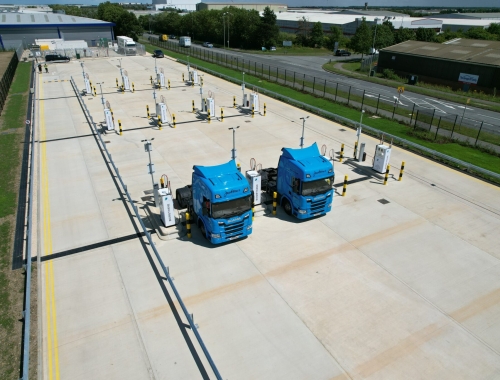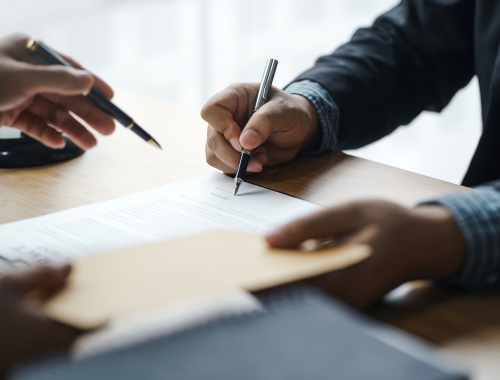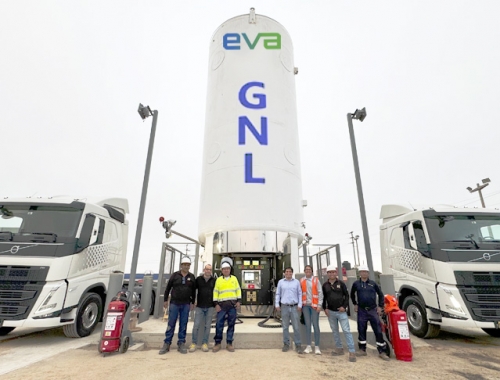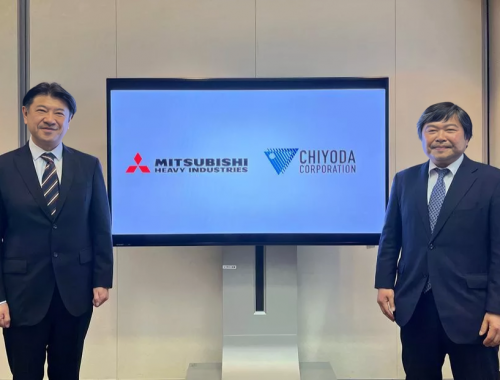Barents Blue: Norwegian natural gas to ammonia
SUMMARY
Horisont is halfway through permitting, and a final investment decision could be reached in 2024. [image credit: Horisont Energi]
By Joseph MurphyPOSTED IN:
Barents Blue has been pitched as Europe’s largest clean ammonia production project. Situated in Finnmark, in north Norway, the plant’s first train alone is expected to produce 1mn metric tons of blue ammonia/year from 1bn m3/yr of natural gas feedstock produced in the Barents Sea. It may comprise up to three trains in the future.
Horisont Energi, the developer, is now halfway through obtaining the necessary permits for the project, CEO Bjørgulf Haukelidsæter Eidesen tells Gas Pathways. Feasibility and pre-front end engineering design (FEED) studies have been completed, and the aim is to reach necessary commercial agreements this year. A final investment decision is not anticipated until at least 2024 – later than originally envisaged when the project was announced in 2021.
Change in partners
Horisont Energi originally teamed up with seasoned Norwegian oil and gas producers Equinor and Var Energi to take the project forward, signing a cooperation agreement with the pair in late 2021. That agreement lapsed at the end of January this year, and Horisont Energi brought on board Spanish ammonia producer Fertiberia as a replacement.
Commenting on its withdrawal, Equinor said that “after thorough assessment of the project and our overall portfolio, we have concluded that it is no longer appropriate to proceed with the Barents Blue concept.”
Natural gas supply for the first train is due to come from the Snohvit gas field in the Barents Sea, which provides supply for the Hammerfest LNG complex. Despite leaving Barents Blue, Equinor, Snohvit’s operator, has said it “remains positive to explore supply solutions” from the field to the ammonia project.
Var Energi, on the other hand, has concluded that its gas resources in the Barents Sea, namely at the Goliat, Alke and Lupa fields, “will require an export solution with greater capacity than what we deem realistic within the scope of the project.”
Snohvit’s gas will be enough to meet the needs of Barents Blue’s first train, according to Eidesen. And it is the only source of gas that can be delivered within the project’s timeline, and provide supply for 25 years.
The leading producer of green ammonia, Fertiberia brings to the table “extensive experience of procedures and technical specifications for operating production plants,” Eidesen says. “They also bring five decades of plant optimisation that they can provide us with to reduce the capex and increase the efficiency of Barents Blue.”
Fertiberia also has existing commercial infrastructure and operations to secure a market for the produced ammonia. In June last year, the company also became the first major player in the fertiliser sector to manufacture CO2-free ammonia on an industrial scale, after inaugurating a green ammonia plant in Puertollano, Spain.
“They are already selling green ammonia to a large customer base and they can provide us with offtake,” Eidesen says, noting that a significant share of production from Barents Blue’s first train could be delivered to Spain.
“The commercial presence is important. The infrastructure, the marketing capabilities in terms of dealing with carbon offset, and with deliveries – they bring all these sorts of things to the table,” Eidesen says.
Handling the CO2
For ammonia to be classified as blue, the CO2 that is emitted from the production process must of course be captured and stored, and this is where Horisont Energi’s Polaris carbon capture and storage (CCS) project comes in. Polaris is due to have an overall capacity of 100mn mt of CO2. Initially it is expected to receive up to 2mn mt of CO2 annually, Eidesen says, with this capacity potentially set to ramp up to 4mn mt/yr at a later point. Beyond Barents Blue, some of this capacity can be offered to third-party emitters in Europe
Equinor also announced in early February it would be withdrawing from Polaris. According to Eidesen, Horisont Energi is seeking a replacement partner that, like Equinor, has experience with drilling and other proficiencies found in the oil and gas industry.
Horiston Energi plans to provide an update of capital and operating expenditure projections at Barents Blue later this year. Horisont Energi notes that the change in partners will have no bearing on the 482mn kroner ($48.3mn) grant that has been provided to Barents Blue under the EU IPCEI hydrogen program.
Europe has largely focused its attention on developing green rather than blue ammonia. But Barents Blue will fit within the boundaries of the EU taxonomy for clean ammonia, Eidesen says, producing only 50 grams of CO2 for every 1 kg of the product. The project will also focus on sustainable solutions and circular practices in its design, with a focus on biodiversity and water resources, he says.
Asked what can help spur the development of clean ammonia in Europe, Eidesen says that the targets set out in the RepowerEU plan are pushing things in the right direction. The target of having the equivalent of 100mn mt of annual clean ammonia consumption by the end of the decade certainly is ambitious, he says, but blue ammonia will have a clear role in reaching towards it. Stricter International Maritime Organisation (IMO) rules on shipping emissions will also support the sector’s development.






